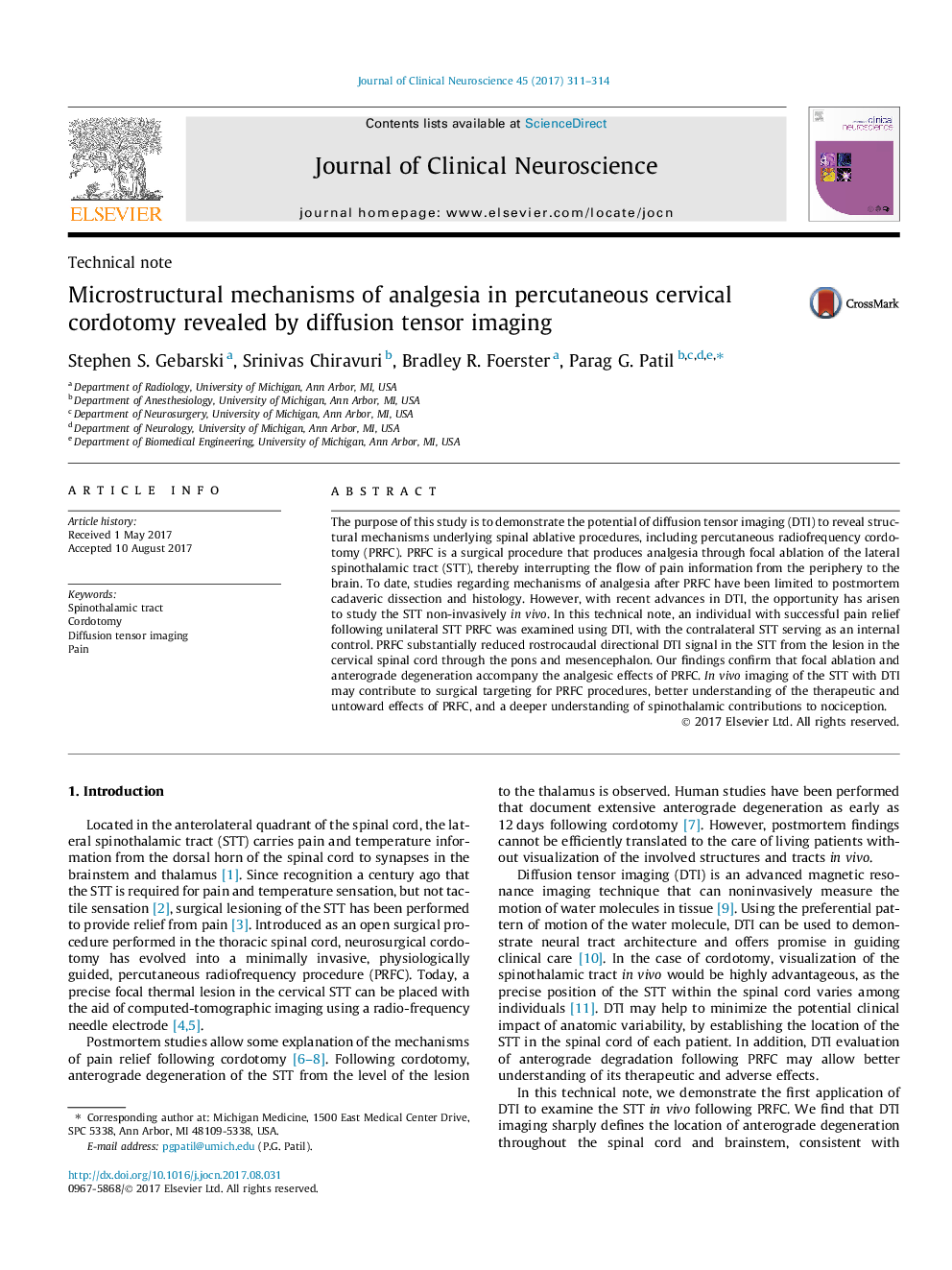| Article ID | Journal | Published Year | Pages | File Type |
|---|---|---|---|---|
| 8685591 | Journal of Clinical Neuroscience | 2017 | 4 Pages |
Abstract
The purpose of this study is to demonstrate the potential of diffusion tensor imaging (DTI) to reveal structural mechanisms underlying spinal ablative procedures, including percutaneous radiofrequency cordotomy (PRFC). PRFC is a surgical procedure that produces analgesia through focal ablation of the lateral spinothalamic tract (STT), thereby interrupting the flow of pain information from the periphery to the brain. To date, studies regarding mechanisms of analgesia after PRFC have been limited to postmortem cadaveric dissection and histology. However, with recent advances in DTI, the opportunity has arisen to study the STT non-invasively in vivo. In this technical note, an individual with successful pain relief following unilateral STT PRFC was examined using DTI, with the contralateral STT serving as an internal control. PRFC substantially reduced rostrocaudal directional DTI signal in the STT from the lesion in the cervical spinal cord through the pons and mesencephalon. Our findings confirm that focal ablation and anterograde degeneration accompany the analgesic effects of PRFC. In vivo imaging of the STT with DTI may contribute to surgical targeting for PRFC procedures, better understanding of the therapeutic and untoward effects of PRFC, and a deeper understanding of spinothalamic contributions to nociception.
Related Topics
Life Sciences
Neuroscience
Neurology
Authors
Stephen S. Gebarski, Srinivas Chiravuri, Bradley R. Foerster, Parag G. Patil,
